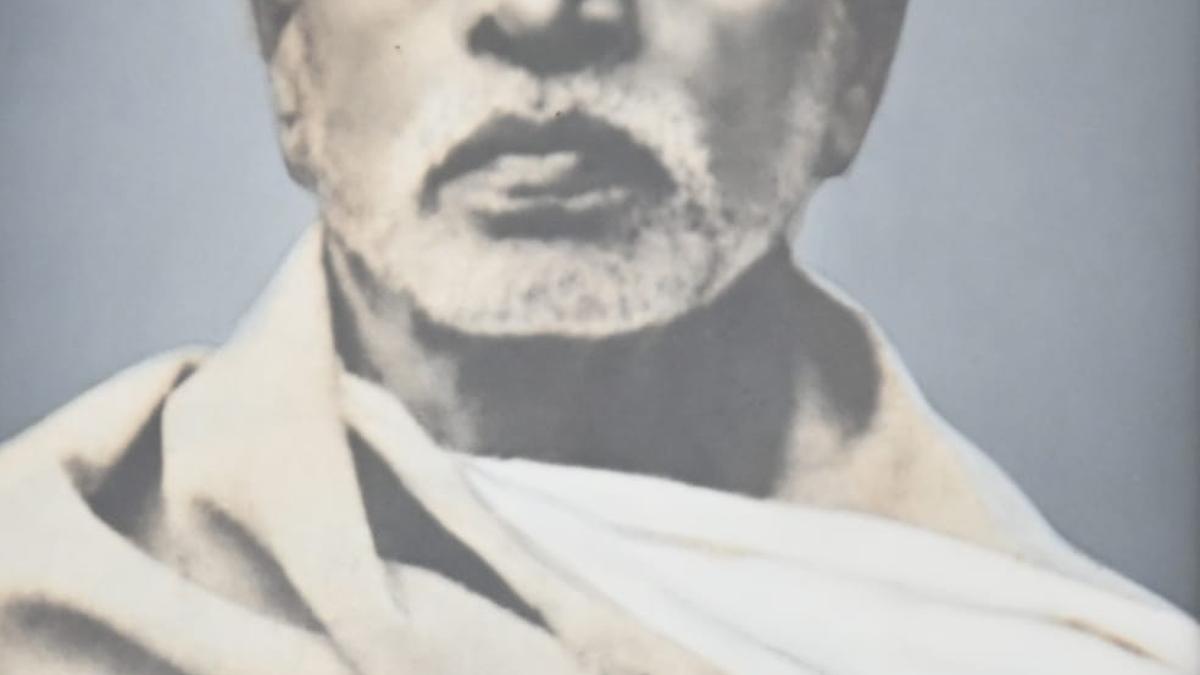Umayalpuram Swaminatha Iyer
Among the galaxy of Sangita Kalanidhis adorning the wall of the Music Academy is Umayalpuram Swaminatha Iyer, who won the award in 1936. A disciple of Umayalpuram Krishna Bhagavatar and Sundara Bhagavatar, who were direct disciples of Saint Tyagaraja, Swaminatha Iyer continues to live on the pages of Mohamul, a novel by T. Janakiraman.
According to Janakiraman, Ranganna, the teacher of Babu, the hero of the novel, is a fictional version of Swaminatha Iyer. Janakiraman also learnt music from him.
“He was a student of Maha Vaidyanatha Iyer. He viewed life as music. I noticed the same in my father. He would not like talking loudly or even listening to anything loud,” writes Janakiraman in his essay, Novel Pirantha Kathai (The story of the birth of the novel).
“He does not want to show that he knows anything other than music. He does not feel that it was a flaw. He is firm in his conviction that if we do it [music] perfectly, nothing else matters. The way he is sitting lonely on the veranda of the house, in the purple darkness of the bedroom light, expecting nothing. His self-confidence reinforced his conviction. Maybe he is also like my father,” Janakiraman narrates the personality of Ranganna in the words of Babu.
The generation that listened to and learnt from Swaminatha Iyer is no more. Jankiraman would be 103 if he was alive and Semmangudi R. Srinivasa Iyer, who learnt from Swamintha Iyer, who died in 2003, would be 118. Even Srinivasa Iyer’s teacher Maharajapuram Viswanatha Iyer was a student of Swaminatha Iyer.
“The perfect way to learn the basic lessons of music is to be taught by him. Only after ensuring that swara sthanas are perfectly captured as suttha swaras in the throat, will he teach further. He has a soft voice. Oh. What a swaram? He will sing without any unnecessary sangathis. If we sing swaras in a threatening manner and with mathematical calculations, he will say that it was not music, but only noise. He would say, do not spoil your voice by singing in this manner’,” recalls Srinivasa Iyer in his memoirs Semmangudiyn Kural.
The simplicity that was the hallmark of Ranganna could be seen manifested in the photograph of Swaminatha Iyer taken probably in the backyard of his house on the banks of the Cauvery. He remained a repository of knowledge of Saint Thyagaraja and his krithis.
Swaminatha Athreyan, the author of Thiyagaraja Anubavangal, a collection of stories that trace the incidents that gave birth to various keerthanas, says they were narrated to him by Swaminatha Bhagavatar during his student days in Kumbakonam.
“I used to wash his clothes out of respect. I also got to listen to many stories while I heard some conversations Swaminatha Iyer had with Yagnaswami Shastri, and from Embar Vijayaraghavachariar,” Athreyan says in an interview to The Hindu.
Janakirman says it would take Swaminatha Iyer an hour to align in the sruti. “It does not mean that he does not know how to align with the sruti. He delves deep into the sruti. He will continue to adjust the tambura till he is hundred per cent satisfied with the sruti. He has a fantastic ear. When he talks, he would ask us to listen to other sounds. The sounds of birds, the sound of the oil mill, and the crying of a child. The world is full of sound. Even when someone talks, he would tell us about the scale of the sruti. He would ask us how those sounds were away from our basic notes,” writes Janakiraman about the sensitive ears of Swaminatha Iyer.
In his presidential address to the annual music conference of the Music Academy, Swaminatha Iyer had recalled the time he had spent with Maha Vaidhyanatha Sivan at the court of Pudukkottai ruled by Ramachandra Tondaman. “When Veena Subbarayan presented a manuscript to Sivan, he received it with affection. Based on the manuscript, Sivan and his brother Ramasamy Sivan published 73 melaragamaliga, Arupathumoovar Charithira Keerthanangal and many other Tamil kritis,” says Swamintha Iyer.
Pointing out that Telugu and Sanskrit keerthanas became popular because of special thrust on them, he reiterates the need to know the meaning of the keerthanas. “Otherwise, they will become nonsense when Tamils sing them.
Published – December 25, 2024 08:04 pm IST
#Sangita #Kalanidhi #inspired #Ranganna #music #teacher #Mohamul
latest news today, news today, breaking news, latest news today, english news, internet news, top news, oxbig, oxbig news, oxbig news network, oxbig news today, news by oxbig, oxbig media, oxbig network, oxbig news media
HINDI NEWS
News Source



